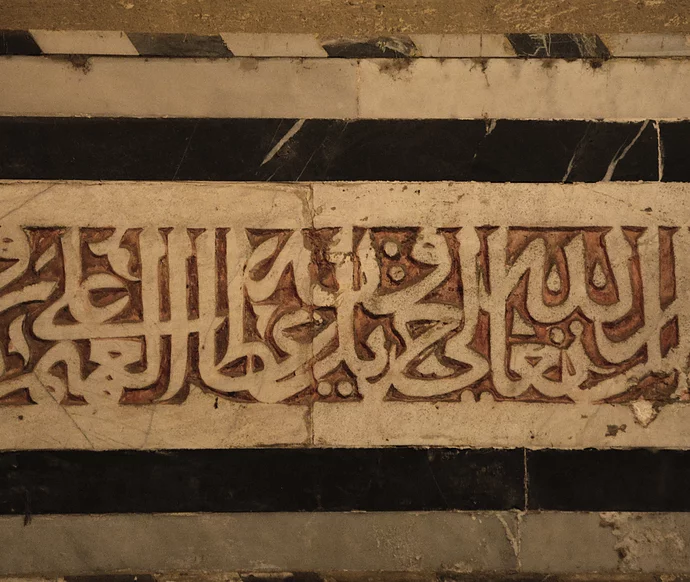-
Currency:
.webp)
.webp)
The illustrious Sultan Al-Ashraf Qaitbey ruled over Egypt and the surrounding lands for 28 years before he died aged over eighty. He built his masterpiece mosque and tomb in 1472-1474
Crenellations’ originated as simple battlements on defensive walls, but in the Mamluk buildings of Cairo they became decorative ornaments so stunning that they’re referred to as ’brides of the sky' in Arabic, thus evoking the tension between earth and sky, function and design. The crenellations adorning the buildings of Sultan Qaitbey are of particularly fine design and craftsmanship.
.webp)
.webp)
The fleur-de-lis motif decorated numerous objects, buildings, and coats of arms throughout Europe in the Middle Ages. The highly stylised lily flower was especially associated with the rulers of France, but it was also often used as a heraldic symbol or decorative ornament in Mamluk Egypt. In the photograph above, intricately interlacing fleurs-de-lis masterfully carved in stone of different hues grace the hood over the portal leading to the madrasa of Sultan Qaitbey.
Geometric patterns are ever-present in Islamic art, from those carved in stone on grand buildings to all kinds of objects in various materials. In Qaitbey’s time, stonemasons achieved astonishing sophistication and mastery. Their works are, however, more than mere eye-pleasing ornaments. The inner logic of their structures is full of symbolic meaning and invites one to reflect on how simplicity relates to complexity, and the visible to the invisible.
.webp)
.webp)
Knotted mouldings, with parallel profiles intertwining at intervals with circles resembling the Arabic letter mim, can be found on all of Qaitbey’s buildings. The Mamluk architects ingeniously used them to group and highlight various architectural elements. The photograph shows them lining an internal arch in the madrasa of Sultan Qaitbey and framing its support structure.
Mamluk architects did not apply decoration to their arches. Instead, the stones themselves were shaped into the most exquisite ornamental patterns. This mastery of craftsmanship enabled the perfect fit of joggled voussoirs, the term for the structural stones cut into elaborate shapes that were assembled in alternating colours and form a hallmark of Mamluk architecture. Those in the photograph can be found on a façade within Qaitbey’s complex, around the corner from the workshop where the same attention to detail is applied to the making of all MISHKĀ products.
.webp)
.webp)
Whether adorning sumptuous doors in grand portals or attached to simple kuttubiya compartments for books, Mamluk metalwork has always been of outstanding quality. It could turn an everyday object like a door knocker into a work of art. This is the approach MISHKĀ embraces, for example with the Door Knocker Earrings that were inspired by the detailed metalwork found throughout Sultan Qaitbey’s complex.
Calligraphic inscription bands are a major decorative feature in Mamluk buildings. The walls speak to us through these inscriptions with carefully chosen verses of the Qur’an, with religious invocations, with praises for the people who ordered the building to be constructed, and sometimes with poetry. The inscription on this MISHKĀ bracelet reads: Our Master the Sultan, the King, al-Ashraf Qaitbey, Let His Victory be Glorious. These words once adorned the minbar, or pulpit, in the Sultan’s madrasa.
